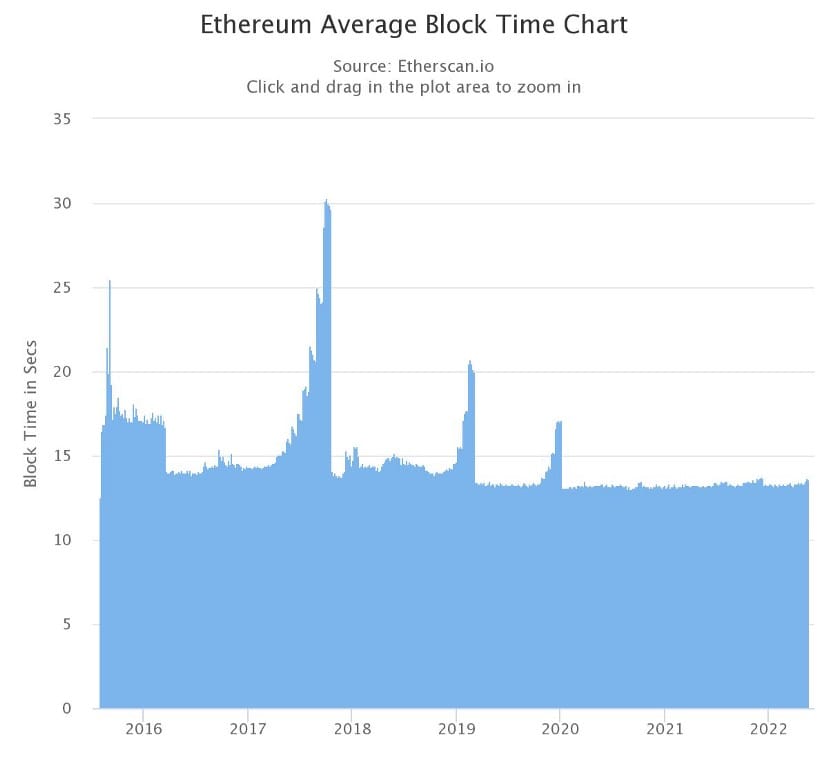
Increasingly, the community is beginning to talk about “Difficulty Bomb”. There are worries that this bomb could “explode” and slow down The Merge. But, what is a “Difficulty Bomb” and why shouldn’t you worry? And what does “Ice Age” have to do with it?
❗ To understand what this article is about, you need to know what The Merge is.
On April 29, an Ethereum Core Devs Meeting was performed, at which the mysterious Difficulty Bomb and its possible impact on the current process of Ethereum’s transition to proof-of-stake (The Merge) was discussed.
What is a Difficulty Bomb? This is a mechanism that Ethereum developers developed back in 2016, when The Merge was just forming in the minds of developers. The point of Difficulty Bomb is to “explode” at a certain moment and start slowing down the production of new blocks, which will lead to a complete shutdown of Ethereum proof-of-work. It was this end point that the developers called “Ice Age”.
How does Difficulty Bomb work? Once triggered, The Bomb “increases the difficulty level of puzzles in the Proof of Work mining algorithm resulting in longer than normal block times (and thus less ETH rewards for miners).” In addition, the algorithm “increases the difficulty exponentially over time and eventually leads to what is referred to as the “Ice Age” — that is, the chain becomes so difficult to mine that it grinds to a halt and stops producing blocks (freezes).”
What is the purpose of the Difficulty Bomb? There are two explanations for this:
- To create a deterrent for miners who want to continue mining on the Ethereum 1.0 (proof-of-work) chain after the network switches to Ethereum 2.0 (proof-of-stake).
- To motivate developers to switch the network to Ethereum 2.0 (proof-of-stake) as soon as possible and avoid the consequences of a Bomb “explosion”, which can significantly slow down the growth of the network.
Difficulty Bomb has already been launched and periodically affects the Ethereum network. This graph shows the ‘Ethereum Block Time History’ on Etherscan. It shows that Difficulty Bomb “is a step-function that increases block times the longer that it exists on the chain.”
So, why is the Difficulty Bomb now remembered again in the community? The problem is that its triggering can negatively affect the Ethereum 1.0 network. In addition, if the developers delay the Difficulty Bomb, they will have to postpone The Merge again, which will not be good news for the community (except for miners, of course).
The dilemma is thus: either one chain will start to slow down, or developers will have to upset the community by postponing The Merge. What do the devs think about this?
If the Bomb works on the eve of The Merge, it will add a lot of difficulties to the developers, because they will have to deal rapidly with “defusing” The Bomb.
Tim Beiko, core Ethereum developer, told The Fortune that “the ‘risk’ here is that if we don’t delay the bomb quickly enough, block times will slow down on Ethereum. The block time starts slowing down by very little, but then every two weeks, the slowdown doubles.”
As Christine Kim, creator of the Valid Points newsletter and Mapping Out Eth 2.0 podcast, tweeted, the developers still have hope that The Merge will take place in the summer, so they do not plan to postpone the difficulty bomb.
Also, Christine Kim reported that a similar approach of developers to difficulty bomb “can get pretty dicey pretty quickly for devs once the bomb is activated.” It follows from the same tweet that Thomas Jay Rush, founder of TrueBlocks, LLC and Philadelphia Ethereum Meetup, “already start to see hashrate tick up because of the bomb’s effect.”
Vitalik Buterin (needs no introduction) said on the call: “We have to evaluate the pain of doing an extra delay hard fork versus the pain of living with 21 or 25 second blocks for a while, which is something we have done before and the world didn’t end.”
Testing of The Merge is actively continuing. Tim Beiko recently tweeted about the problems that developers are solving during the transition of Ethereum to proof-of-stake.
In addition, Beiko stated that bugs and issues do not delaying The Merge, “it’s making sure that Ethereum doesn’t go down during the upgrade.”
So far, it has been decided not to postpone the triggering of the Difficulty Bomb. Vitalik allayed fears, saying that possible difficulties have already been in the history of the network, and it did not ruin it. The developers still hope that The Merge will be completed in the summer. And I hope that the Ethereum network will not face any more difficulties and everything will go according to plan. I continue to observe. See you soon!

